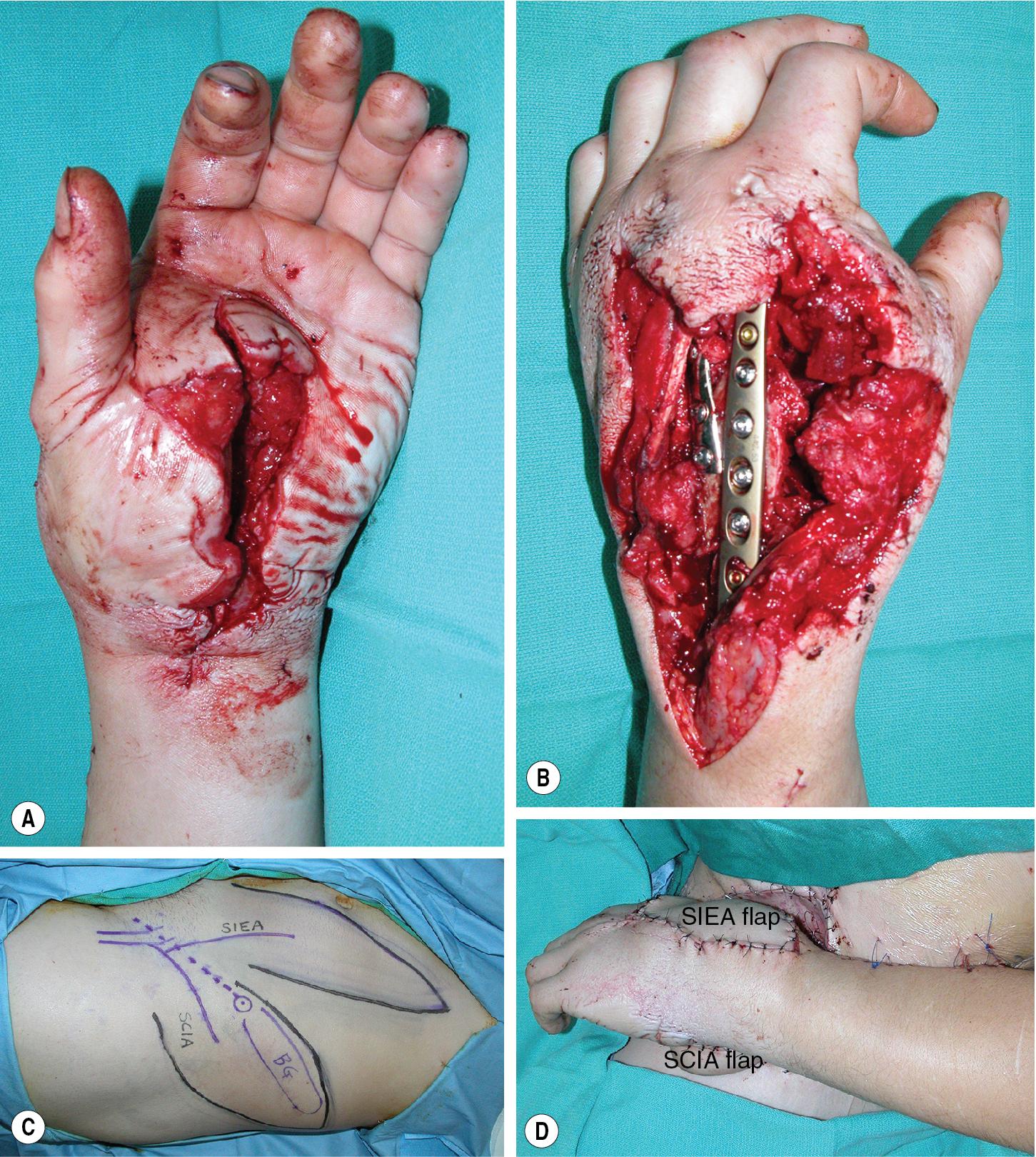Physical Address
304 North Cardinal St.
Dorchester Center, MA 02124
The pedicled groin flap is an axial vascular flap based on the superficial circumflex iliac artery (SCIA). As an axial flap, it can be designed to cover a larger length-width ratio than what is possible with random abdominal flaps. It predominantly serves as a distant pedicled flap and is seldom raised as a free flap because of the short vascular pedicle. It is a workhorse pedicled flap for hand and forearm coverage ( Fig. 91.1 ).

The pedicled abdominal flap is also an axial flap, based on the superficial inferior epigastric artery (SIEA). It can be added to a groin flap to provide robust coverage of dorsal and volar hand wounds when a single pedicled groin flap is not large enough (see Fig. 91.1D ).
Pedicled groin flaps are most often indicated for hand and forearm coverage when the patient is too unstable for free flap coverage and for thumb resurfacing in anticipation of toe-to-thumb transfer, because this avoids other pedicled flaps based on forearm tissue. These flaps can also be used in salvage procedures when free flaps fail.
The pedicled groin flap requires that the injured hand is attached to the ipsilateral groin for about 3 to 4 weeks, which may result in stiffness of the joints of the upper limb, especially in elderly patients. Alternative reconstruction such as a forearm flap or free flap may be more suitable for these patients.
The groin flap can also be used as a free tissue transfer in a single-stage procedure, but this is seldom done because of its shortcomings, which include a short pedicle and anatomic variations.
The groin flap scar is well-hidden and often preferred by patients with specific aesthetic concerns.
The groin flap is contraindicated in patients with prior femoral vessel surgery, hernia repair, lymph node biopsy, or vein stripping.
Determine whether the patient is psychologically stable and has adequate social support; they must be able to cope with having a nonfunctional extremity attached to the groin for 3 to 4 weeks before flap division, which may impede with activities of daily living.
The donor groin should be inspected to identify previous surgery or wounds that could have injured the pedicle.
In addition to flap inset and division, thinning, debulking, or tissue rearrangement procedures may be required to achieve an aesthetic result. Before surgery, the patient should be well informed of this possibility.
Routine imaging is not required for flap planning.
Computed tomography (CT) angiogram can demonstrate the presence and course of each pedicle. Nevertheless, input from experienced radiology colleagues is necessary to interpret these complex studies.
Become a Clinical Tree membership for Full access and enjoy Unlimited articles
If you are a member. Log in here